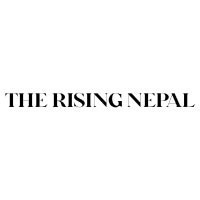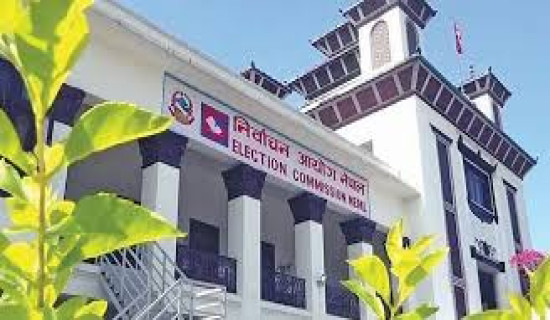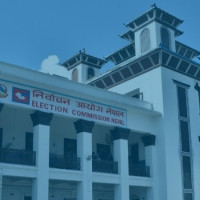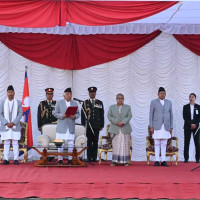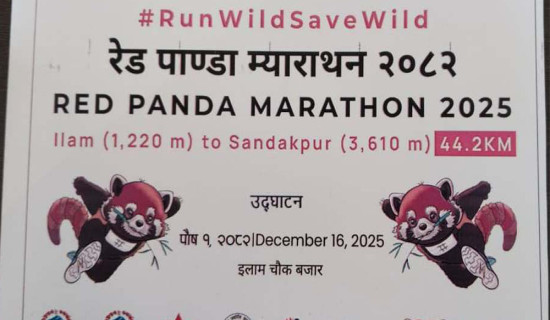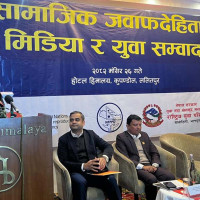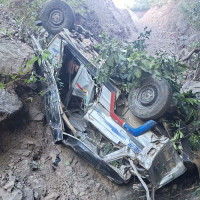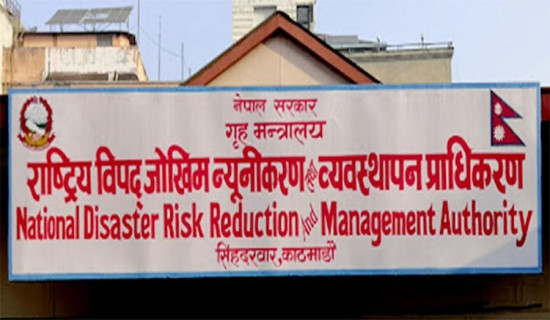- Friday, 12 December 2025
Support Government To Overcome Crisis
There is a cliché in Nepal which says that when troubles come, they come in abundance — one following the other. Nepal has been experiencing numerous catastrophes, both natural and human-made. During the monsoon months of June and July, various parts of the country experienced flooding and landslides, as well as Glacial Lake Outburst Floods (GLOFs).
The adverse impacts of climate change devastated the country during the monsoon, and now the late monsoon rains have disrupted the lives of the people of a nation that had just faced a Gen Z revolution in which around 75 people, mostly youths, were killed. This movement led to widespread and destruction of several public and private properties. Even as the shock of a demonstration that started peacefully but resulted in an overnight change of government was settling among the people, a new government — composed of professionals rather than politicians — came to power under the premiership of Sushila Karki.
Havoc
The new government was just beginning to grapple with forming a cabinet, opening cases against corruption that had triggered the Gen Z demonstrations, and organising the upcoming elections in March 2026, when several parts of the country — especially the Bagmati, Koshi, Madhesh, Gandaki, and Lumbini Provinces — were hit by late monsoons. The Narayani, Bagmati, Kamala, and Koshi rivers, together with their tributaries, flooded and caused havoc in the surrounding areas. As of October 7, 2025, the nationwide water-induced death toll has reached 61, while 39 people lost their lives in Ilam District in eastern Nepal due to landslides triggered by continuous rainfall. Several people are still reported missing, and villages and human settlements have been washed away in different parts of the country. In addition, most highways in the country have been affected by landslides or washed away by rain and floods.
Nepal has been facing a series of challenges; however, it will not be an exaggeration to say that the nation is now facing the biggest challenge in its history. In this federal republic, as a result of distrust and dissatisfaction caused by corruption and the lack of foresight by elected governments to implement development plans — particularly for the youth — saw an unprecedented Gen Z protest. This turn of events has handed responsibility to a small group of Nepali professionals, instead of elected politicians, with proven records of expertise, honesty, and hard work. The time has come to trust these people, most of whom have not taken any perks or salaries from the state and have immersed themselves in running the country and preparing for elections in March 2026.
Both the Gen Z protestors and the general Nepali people should give them the benefit of the doubt and trust their ability to guide the country through these troubling days and conduct the elections as committed. As soon as the weather forecast predicted severe rainfall, the Karki-led Cabinet announced the closure of all highways and restricted transportation from Friday night. The Department of Transportation gave strict instructions to stop all buses and trucks from bringing in passengers and commodities into the Kathmandu Valley and vice versa. Several landslides occurred along these roads, and the closure prevented many accidents that might have occurred had vehicles been operating.
This was a simple but strategic move — one that saved lives, something that had not happened during last year’s floods. People should appreciate and recognise this and support this small cabinet to carry out their responsibilities to best serve the people of a nation that has been riddled in disaster at the moment. Unfortunately, instead of focusing solely on opening corruption cases, investigating the vandalism that occurred during the peaceful Gen Z demonstration, and preparing for the upcoming elections based on the current Constitution, the Karki government now has to deal with the massive losses caused by the flash floods of September 2025.
According to the National Disaster Risk Reduction and Management Authority (NDRRMA) of Nepal, a total of 41 roads and highways across the country have been damaged, with an estimated loss of 27.98 billion rupees (208 million dollars). Several bridges have been washed away, making it difficult for residents in affected areas. Fields and homes have been destroyed. This is the rice harvesting season, and many farmers have been severely affected by the flash floods. One disaster after another continues to hit Nepal.
Lack of leadership ability
Now, the existing mainstream political parties and their leaders — many of whom have been accused of corruption — should take a back seat. After remaining hidden following the recent Gen Z protest, some of them have reappeared and started speaking publicly, claiming they have done nothing wrong. This is again a lack of their leadership abilities and foresight to see what impacts such remarks could have in the future. Each of the mainstream political parties should now voluntarily contribute to rebuilding the country’s infrastructure so that the population can start receiving some relief.
The Gen Z movement should also unite and refrain from demanding drastic steps like direct elections for either a president or a prime minister. The time has come for the Gen Zeers and the general population to unite and help the current Karki-led government restore the damaged infrastructure, bring normalcy back, and conduct the upcoming elections peacefully.
(Sharma is a senior journalist and women's rights advocate. namrata1964@yahoo.com X handle: @NamrataSharmaP)


